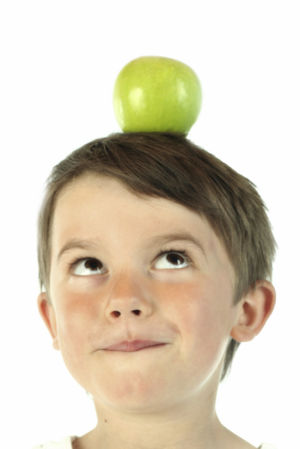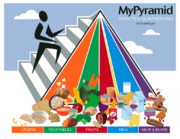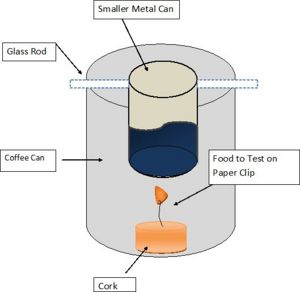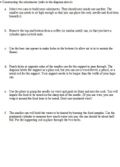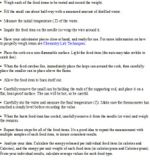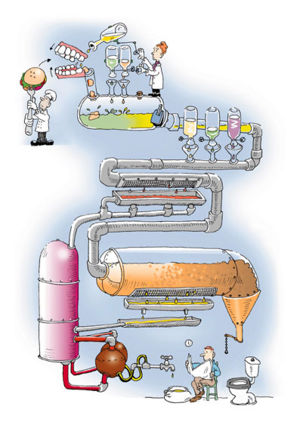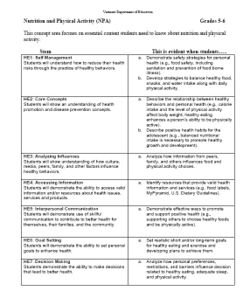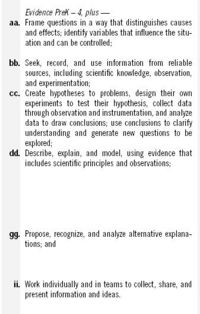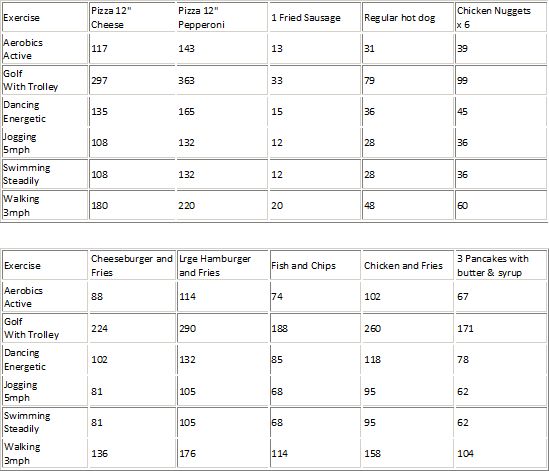Fun with food
Biology in Middle Schools home | |Elementary School sister project
Biology In Middle Schools is a Saint Michael's College student project. Link under 'toolbox' for a printer-friendly version. Click on handouts to print full resolution versions. Please see Wikieducator's disclaimer, our safety statement, and the Creative Commons licensing in English and in legalese.
Nutrition and Fitness
Lesson Plan
This lesson plan is designed to teach the importance of nutrition and fitness within the curriculum. In this lesson plan, the biochemical components of food will be introduced, the new food pyramid will be discussed and finally the importance of staying actively fit will be emphasized. Also, connection to cellular respiration as well as the negative effects of poor nutrition/fitness habits will be explained/discussed.
Standards Addressed
1.Understanding the NEW Food Pyramid
2.Comprehending the Biochemical Makeup of Food
3.Understanding WHY fitness is so important.
General Goal(s):
Students will be aware of why healthy foods are a better choice, as well as how fitness is crucial to a healthy lifestyle.
Specific Objectives
- -Introduce the concept of "metabolism" and tie in the biological concepts of Cellular Respiration
- -Explain and Illustrate the Biochemical Components of Food (i.e: Calorie, Lipids, Amino Acids, Carbohydrates)
- -Specify how Cellular Respiration ties in with fitness and where "energy" comes from.
- -Explain and Illustrate the Biochemical Components of Food (i.e: Calorie, Lipids, Amino Acids, Carbohydrates)
Understanding the Food You Eat:The New Food Pyrimid
- Note: Before starting the Activity introduce the FIVE food groups present in the New Food Pyramid.'
Description: In this activity, students learn about the five food groups and how to use the food pyramid as their guide.
Step-By-Step Procedures:
- 1. The students will prepare on paper a diagram of a food pyramid, without the help of his/her peers. The purpose is to find out what they think the correct portions are before the correct amount is given.
- 2. Teacher will then list the six categories shown on the food pyramid (5 food groups: grains, protein, dairy, fruits, vegetables; and sweets/fats -- use sparingly) on the board.
- 3. The students will evaluate for one week the foods they eat. They will record a daily log as given by the teacher. It will be from Monday thru Monday.
- 4. After that week is complete, each student will analyze their nutrition intake and for the following week will adjust their intake to fit the new pyramid.
Understand the Food You Eat: Calorimeter Lab
Objective
The goal of this experiment is to determine the amount of chemical energy stored in food by burning it and capturing the heat given off in a homemade calorimeter.
Introduction
You know that the energy that keeps your brain and body going comes from the food you eat. Your digestive system and the cells in your body break down the food and gradually oxidize the resulting molecules to release energy that your cells can use and store.
- In this project you will learn a method for measuring how much chemical energy is stored in different types of food.
- You will oxidize the food much more rapidly, by burning it in air. You'll use a homemade calorimeter to capture and measure the heat energy released by burning. The basic idea of a calorimeter is to capture the released heat energy with a reservoir of water, which has a high capacity for absorbing heat. The temperature of the water reservoir is measured at the beginning and at the end of the experiment.
- The increase in the temperature (in °C) multiplied by the mass of the water (in grams) will give you the amount of energy captured by the calorimeter, in calories.
Qwater = mcΔT
- Q water is the heat captured, in calories (cal);
- m is the mass of the water, in grams (g);
- c is the specific heat capacity of water,
- which is 1 cal/g°C (1 calorie per gram per degree Celsius)
- ΔT is the change in temperature
- the Final temperature of the water minus the Initial temperature of the water in (°C).
Materials and Equipment
To do this project, you will need the following materials and equipment:
Homemade calorimeter
- 2 Tin cans (one larger than the other)
- 1 Wood dowel, pencil or other rod-shaped support
- 1 Cork
- 1 Needle or wire
- 1 Pair of pliers
- 1 Old style beer can opener
- Hammer and nail
- Safety glasses
- Graduated cylinder
- Water (preferably distilled)
- Thermometer (calibrated in °C, range 20–100 or greater)
- Lighter or matches
- Scale (calibrated in grams, per gram of food)
- Various Food items to test
*This idea is based on a similar design demonstrated by Jack O’Sullivan-Griffith in the Christi School science fair and in the Vermont State Science Fair.
Procedure
Digestion Basics
The process of digestion starts in the mouth; food is broken down by chewing. The broken down food then travels down the esophagus to the stomach. From there the food particles travel through the small intestine to the large intestine where digestion is completed.
- The conversion of food into a form that can be absorbed by the body is called digestion. - It describes how the body breaks down food and uses it for energy, for cell repair and growth.
- The liver and pancreas add enzymes and juices that aid in this process.
- Carbohydrates are broken down to glucose.
- Proteins to amino acids.
- Fats to glycerol and fatty acids.
Vermont Standards of Education
Fitness
What is B.M.I
For years, doctors have used height and weight measurements to assess a child's physical growth in relation to other kids the same age. Now they have another tool: body mass index (BMI). BMI is a calculation that uses height and weight to estimate how much body fat someone has. Doctors use it to determine how appropriate a child's weight is for a certain height and age.
Get your Body Mass Index Calculated: BMI Calculator
See How Many Calories You Can Burn with Each Exercise by following this link
It is important to keep track of your daily intake of food!

